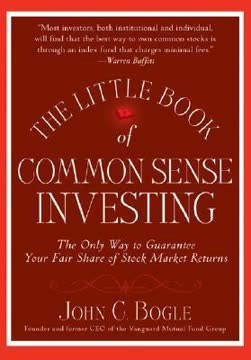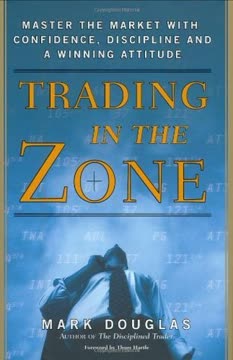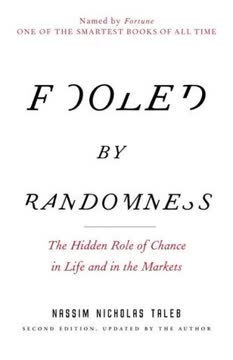Key Takeaways
1. Financial education is your unfair advantage in the new economy
"Money does not make us rich. Knowledge does."
New economic reality: The world has changed dramatically since 1971 when the U.S. dollar was taken off the gold standard. Money is no longer money, but debt. This shift has created a new economic landscape where:
- Savers are losers due to inflation and currency devaluation
- Traditional financial advice is outdated and potentially harmful
- The gap between the rich and poor is widening rapidly
Power of financial education: To thrive in this new economy, one must invest in financial education. This includes understanding:
- The CASHFLOW Quadrant (Employee, Self-employed, Business owner, Investor)
- The difference between assets and liabilities
- How to generate passive income and cash flow
- Tax strategies that benefit the wealthy
By gaining this knowledge, individuals can navigate the complex financial world, make informed decisions, and create wealth regardless of economic conditions.
2. Taxes favor entrepreneurs and investors over employees
"The harder you work for money, the more you pay in taxes."
Tax system structure: The tax code is designed to incentivize certain behaviors that benefit the economy. This system favors:
- Business owners (B quadrant)
- Investors (I quadrant)
Over:
- Employees (E quadrant)
- Self-employed individuals (S quadrant)
Key tax advantages: Entrepreneurs and investors can benefit from:
- Lower tax rates on passive and portfolio income
- Ability to defer taxes through various strategies
- Numerous deductions and credits for business activities
- Opportunities to use debt as leverage while receiving tax benefits
To take advantage of these benefits, individuals must shift their focus from earning a high salary to building businesses and acquiring income-producing assets. This requires a change in mindset and financial education to understand and implement tax-efficient strategies.
3. Leverage debt to acquire assets and build wealth
"The moment a person knows how to make money out of nothing or with other people's money or a bank's money, they enter a different world."
Good debt vs. bad debt: Not all debt is created equal. The key is to use debt strategically:
- Good debt: Used to acquire assets that generate income
- Bad debt: Used to purchase liabilities or consumables
Leveraging debt for wealth: Successful investors use debt to:
- Acquire income-producing assets (e.g., rental properties)
- Increase returns on investment through leverage
- Take advantage of tax benefits associated with certain types of debt
Example strategy: Use debt to purchase a rental property, have tenants pay off the mortgage, and benefit from:
- Appreciation of the property value
- Monthly cash flow from rent
- Tax deductions on mortgage interest and depreciation
By mastering the use of debt, investors can accelerate wealth creation and achieve financial freedom more quickly than those who rely solely on savings or avoid debt altogether.
4. Reduce risk through financial knowledge and control
"Investing is not risky. A lack of financial education is very risky."
Redefining risk: Many people believe investing is inherently risky. However, risk is often a result of:
- Lack of knowledge
- Lack of control
- Poor decision-making
Strategies to reduce risk:
- Invest in financial education to understand various asset classes
- Develop skills in analyzing markets and investments
- Learn to use financial instruments for hedging and protection
- Focus on cash flow rather than capital gains
- Diversify across different asset classes, not just within one (e.g., stocks)
Control vs. diversification: Traditional advice emphasizes diversification to reduce risk. However, true risk reduction comes from increasing control through knowledge and skills. By becoming an expert in specific areas of investing, you can make informed decisions and navigate market fluctuations more effectively.
5. Work for assets and cash flow, not for money
"The rich don't work for money."
Paradigm shift: Instead of working for a paycheck, focus on acquiring assets that generate ongoing cash flow. This approach leads to:
- Financial freedom
- Reduced tax burden
- Ability to weather economic downturns
Types of income to pursue:
- Passive income (e.g., rental income, royalties)
- Portfolio income (e.g., dividends, capital gains)
- Residual income (e.g., network marketing, online businesses)
Building an asset column: Systematically acquire assets that generate cash flow, such as:
- Rental properties
- Dividend-paying stocks
- Businesses with recurring revenue models
- Intellectual property (patents, copyrights)
By focusing on building an asset column rather than simply earning a high salary, individuals can create lasting wealth and achieve financial independence.
6. Develop skills in business, real estate, and technical investing
"The more you learn on the B and I side, the more you'll earn. Over time, as your education compounds, so do your returns."
Essential skills for wealth creation:
-
Business/Entrepreneurship:
- Sales and marketing
- Team building and leadership
- Systems development
- Financial management
-
Real Estate:
- Property analysis and valuation
- Financing strategies
- Property management
- Market trend analysis
-
Technical Investing:
- Chart reading and technical analysis
- Understanding market cycles
- Risk management techniques
- Use of derivatives and other financial instruments
Continuous learning: Commit to ongoing education in these areas through:
- Seminars and workshops
- Mentorship programs
- Real-world experience and practice
- Networking with successful investors and entrepreneurs
By developing expertise in these key areas, individuals can identify opportunities, make informed decisions, and maximize returns across various asset classes.
7. Become a Level 5 Capitalist Investor for maximum returns
"An infinite return means: Money for nothing."
Five levels of investors:
- Zero Financial Intelligence
- Savers are Losers
- I'm Too Busy
- I'm a Professional
- Capitalist
Characteristics of Level 5 Capitalist Investors:
- Use Other People's Money (OPM) to invest
- Focus on creating and acquiring assets
- Understand and leverage tax advantages
- Seek infinite returns (getting initial investment back while retaining ownership)
- Operate in both B (Business) and I (Investor) quadrants
Steps to become a Level 5 Investor:
- Develop a strong financial education foundation
- Gain experience as a Level 4 Professional Investor
- Build a team of experts (legal, tax, finance)
- Create or acquire businesses that generate cash flow
- Use leverage and OPM to scale investments
- Continuously seek ways to minimize risk and maximize returns
By striving to become a Level 5 Capitalist Investor, individuals can achieve the highest levels of wealth and financial freedom, often with minimal personal capital at risk.
Last updated:
FAQ
What's Unfair Advantage by Robert T. Kiyosaki about?
- Focus on Financial Education: The book emphasizes the importance of financial education as a means to gain an unfair advantage in wealth creation.
- Critique of Traditional Education: Kiyosaki argues that traditional education does not prepare individuals for financial success in the modern economy.
- Economic Transition: It discusses the shift from the Industrial Age to the Information Age, highlighting the obsolescence of job security and traditional savings methods.
- Real-Life Investments: Kiyosaki shares personal experiences and strategies for investing in real estate and understanding the rules of money today.
Why should I read Unfair Advantage by Robert T. Kiyosaki?
- Gain Financial Insights: The book provides insights into financial education often overlooked in traditional schooling.
- Empowerment Through Knowledge: It empowers readers to take control of their financial future by emphasizing proactive learning.
- Learn from Real Experiences: Kiyosaki shares his journey and lessons from successes and failures, making the content relatable.
- Prepare for Economic Changes: The book prepares readers for expected economic volatility, encouraging proactive financial strategies.
What are the key takeaways of Unfair Advantage by Robert T. Kiyosaki?
- Financial Education is Crucial: Kiyosaki stresses that financial literacy is essential for navigating modern finance complexities.
- Use Debt Wisely: The book teaches leveraging debt as a tool for acquiring assets and generating cash flow.
- Question Traditional Advice: Kiyosaki encourages challenging conventional wisdom about saving, investing, and job security.
- Understanding Assets vs. Liabilities: Distinguishing between assets and liabilities is fundamental to building wealth.
What are the best quotes from Unfair Advantage by Robert T. Kiyosaki and what do they mean?
- “Savers are losers.”: This highlights the belief that saving money in a depreciating currency is detrimental to wealth accumulation.
- “Choose your teachers wisely.”: Emphasizes learning from those with real-world financial success rather than traditional educators.
- “The harder you work for money, the more you pay in taxes.”: Suggests that financial education can help minimize tax burdens.
How does Unfair Advantage by Robert T. Kiyosaki define assets and liabilities?
- Assets Put Money In: Assets are defined as anything that puts money in your pocket, like rental properties or investments.
- Liabilities Take Money Out: Liabilities are things that take money out of your pocket, such as a personal residence or car.
- Importance of Financial Literacy: Understanding the difference is crucial for building wealth, as many mistakenly consider their homes as assets.
What is the CASHFLOW Quadrant in Unfair Advantage by Robert T. Kiyosaki?
- Four Types of Income: The quadrant categorizes individuals into Employees (E), Self-Employed (S), Business Owners (B), and Investors (I).
- Focus on B and I: Kiyosaki argues for operating in the B and I quadrants for financial freedom through business ownership and investments.
- Understanding Cash Flow: It helps individuals understand income sources and how to shift towards more favorable financial positions.
How does Unfair Advantage by Robert T. Kiyosaki address the concept of inflation?
- Inflation Diminishes Savings: Kiyosaki argues that inflation erodes money's purchasing power, making saving ineffective long-term.
- Invest in Tangible Assets: He suggests investing in real estate, gold, and silver to combat inflation, as they retain value over time.
- Understanding Money Dynamics: The book encourages understanding how government policies and economic conditions affect inflation and finances.
What is the significance of debt in Unfair Advantage by Robert T. Kiyosaki?
- Debt as a Tool: Kiyosaki views debt as a necessary tool for wealth creation, allowing leverage of other people's money to acquire assets.
- Tax Advantages: Using debt can provide tax benefits, as interest payments on loans can often be deducted from taxable income.
- Risk Management: While beneficial, Kiyosaki emphasizes managing debt wisely to avoid financial pitfalls.
What strategies does Unfair Advantage by Robert T. Kiyosaki suggest for investing?
- Start Small and Learn: Kiyosaki advises starting with small investments to gain experience before moving to larger deals.
- Focus on Cash Flow: Emphasizes investing for cash flow rather than capital gains, as cash flow provides ongoing income.
- Continuous Education: Stresses the need for ongoing financial education to adapt to changing market conditions.
How does Unfair Advantage by Robert T. Kiyosaki suggest one should approach financial education?
- Invest Time in Learning: Encourages prioritizing financial education through courses, books, and mentorship from successful investors.
- Question Traditional Education: Challenges the conventional education system for failing to teach practical financial skills.
- Adopt a Growth Mindset: Promotes continuous learning and adaptation, essential for navigating modern finance complexities.
What are the Five Levels of Investors in Unfair Advantage by Robert T. Kiyosaki?
- Investor Levels Explained: Kiyosaki outlines five levels, from zero financial intelligence to seasoned capitalists.
- Path to Improvement: The levels serve as a framework for assessing investment knowledge and identifying growth areas.
- Importance of Education: Highlights the significance of continuous learning and adaptation in the investment landscape.
How can I apply the concepts from Unfair Advantage by Robert T. Kiyosaki to my life?
- Start with Financial Education: Invest in financial education through books, courses, and practical experiences.
- Assess Your Financial Position: Use the CASHFLOW Quadrant to evaluate your income generation and identify improvement areas.
- Take Action: Apply principles of leveraging debt, understanding taxes, and investing in cash flow-generating assets.
Review Summary
Unfair Advantage receives mixed reviews, with ratings ranging from 1 to 5 stars. Many readers appreciate Kiyosaki's emphasis on financial education and his unique perspective on investing. However, critics argue that the book is repetitive, lacks concrete advice, and contains questionable financial strategies. Some praise the author's insights on taxes, debt, and cash flow, while others find his ideas oversimplified or potentially risky. The book's focus on real estate investing and unconventional financial wisdom resonates with some readers but alienates others.
Similar Books










Download PDF
Download EPUB
.epub digital book format is ideal for reading ebooks on phones, tablets, and e-readers.














